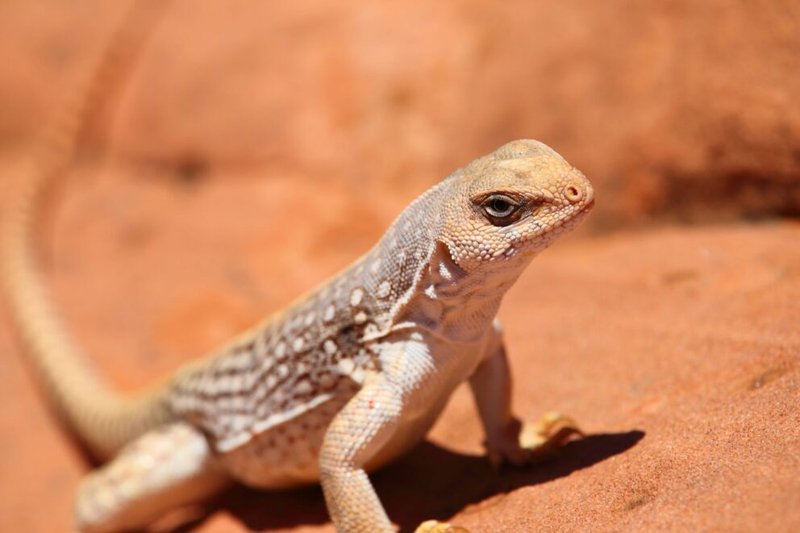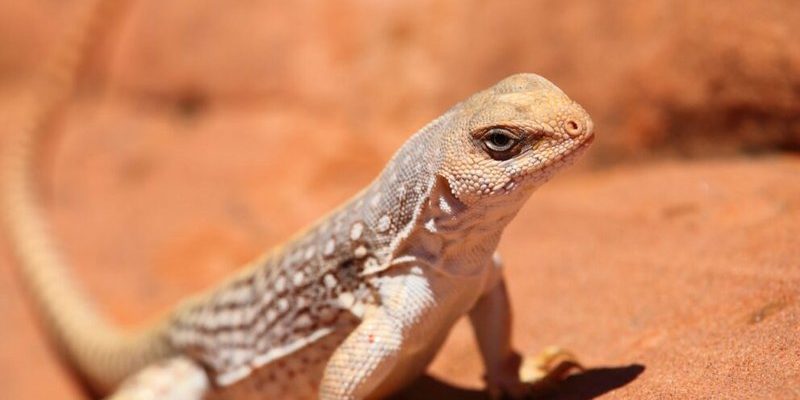
Let’s think of identifying a desert iguana as a treasure hunt. Each clue leads you closer to revealing this lizard’s true identity. Don’t worry; you don’t need a magnifying glass or a treasure map. Just a keen eye and a little info can help you distinguish them from other lizards that share their home. So grab a comfy seat and let’s dive into the world of desert iguanas!
Physical Characteristics of Desert Iguanas
First things first, let’s talk about what a desert iguana looks like. These lizards can grow to be about 16 to 24 inches long, including their tail, which is often longer than their body. One of their most striking features is their light coloring. They usually have a pale gray to yellowish hue that helps them blend into their sandy surroundings. This camouflage is crucial for those moments when a predator might be lurking nearby.
Their scales are smooth and shiny, which sets them apart from other lizards that might have a rougher texture. Another cool thing about desert iguanas is their relatively long limbs and slender bodies, which make them great at sprinting across the hot sand. You might even catch them basking in the sun with their tails coiled behind them, which is quite a charming sight!
Behavioral Traits
You might be wondering how to spot a desert iguana if it’s blending in with the dunes. Well, their behavior can be a great hint too! These lizards are known for being diurnal, meaning they’re active during the day. This means if you see a lizard scurrying around in the daytime, it could very well be a desert iguana. They’re quite social compared to other lizards and often hang out in groups, especially during mating season.
Another behavioral trait is their unique method of thermoregulation. Desert iguanas can often be found basking on rocks or sand to soak up the sun’s rays. This isn’t just a leisurely activity; it’s essential for regulating their body temperature. If you see a lizard lying flat in the sun, don’t shy away just yet—it might be a desert iguana trying to thrive in the scorching desert heat.
Habitat and Range
Let’s set the scene for where these intriguing creatures live. Desert iguanas mainly inhabit the Sonoran Desert, primarily in the southwestern United States and parts of Mexico. They prefer areas with plenty of sunlight, open spaces, and some vegetation, like shrubs and cacti, where they can find shelter.
Their adaptability is remarkable. In a climate that can swing from blistering days to cooler nights, the desert iguana has managed to thrive. You might find them living in sandy areas, rocky outcrops, or even near human dwellings, where they can scavenge for food. This versatility in habitat makes them easier to spot if you know where to look!
Diet and Feeding Habits
Understanding what a desert iguana eats can also help you identify one. These lizards are primarily herbivorous, munching on a variety of plants, flowers, and even the occasional fruit. They enjoy nibbling on cactus pads, which provide both hydration and nutrients in their dry environment. You might find them feasting on leaves, which can sometimes lead them to be spotted when they’re munching away.
Interestingly, their diet changes with the seasons. In spring, they might indulge in fresh greens and blossoms, while in summer, they’re more likely to snack on tougher vegetation. If you see a lizard snacking on plants, that’s definitely a great sign it could be a desert iguana, perfectly suited to its environment!
Color Variations and Camouflage
One of the most fascinating aspects of desert iguanas is their ability to blend in. While they typically have a pale gray to yellowish color, individual lizards can show variations based on their local environment. For example, those living in rockier areas may have slightly different coloring to help them camouflage better.
This natural skill in camouflage is key to their survival. You might notice them appearing almost invisible against the sandy backdrop. So, when you’re out exploring, take a moment to appreciate how nature works its magic. Those subtle differences in color can mean the difference between a predator spotting a meal or passing right by.
Common Misidentifications
When trying to identify a desert iguana, it’s essential to be aware of similar-looking lizards that could throw you off. For instance, they might be confused with the common chuckwalla or horned lizard. Both have their own unique traits, but they don’t share the same habitat or behavior patterns.
The chuckwalla, for example, is bulkier and prefers rockier terrains, while horned lizards tend to have more pronounced horns and a stockier body. Knowing the differences can be super helpful, especially if you’re out in the field, trying to pinpoint exactly what you’ve spotted.
Conservation and Protection
Lastly, let’s chat about the conservation status of the desert iguana. While they’re not currently endangered, their habitat faces threats from human development and climate change. Over time, desert areas can become increasingly vulnerable as urbanization expands.
Being aware of their situation can help you appreciate these unique reptiles even more. If you ever come across one, take a moment to respect their space and the environment they thrive in. Think of it like a little reminder that even the most resilient creatures need our help to continue their existence.
As you explore the fascinating world of desert iguanas, you’ll find that identifying them is an adventure all on its own. From their physical traits and behaviors to their unique habitats, there’s so much to appreciate. So next time you’re out in the desert, eyes peeled for lizards, you’ll have a better idea of how to spot a desert iguana and truly admire this remarkable reptile!

